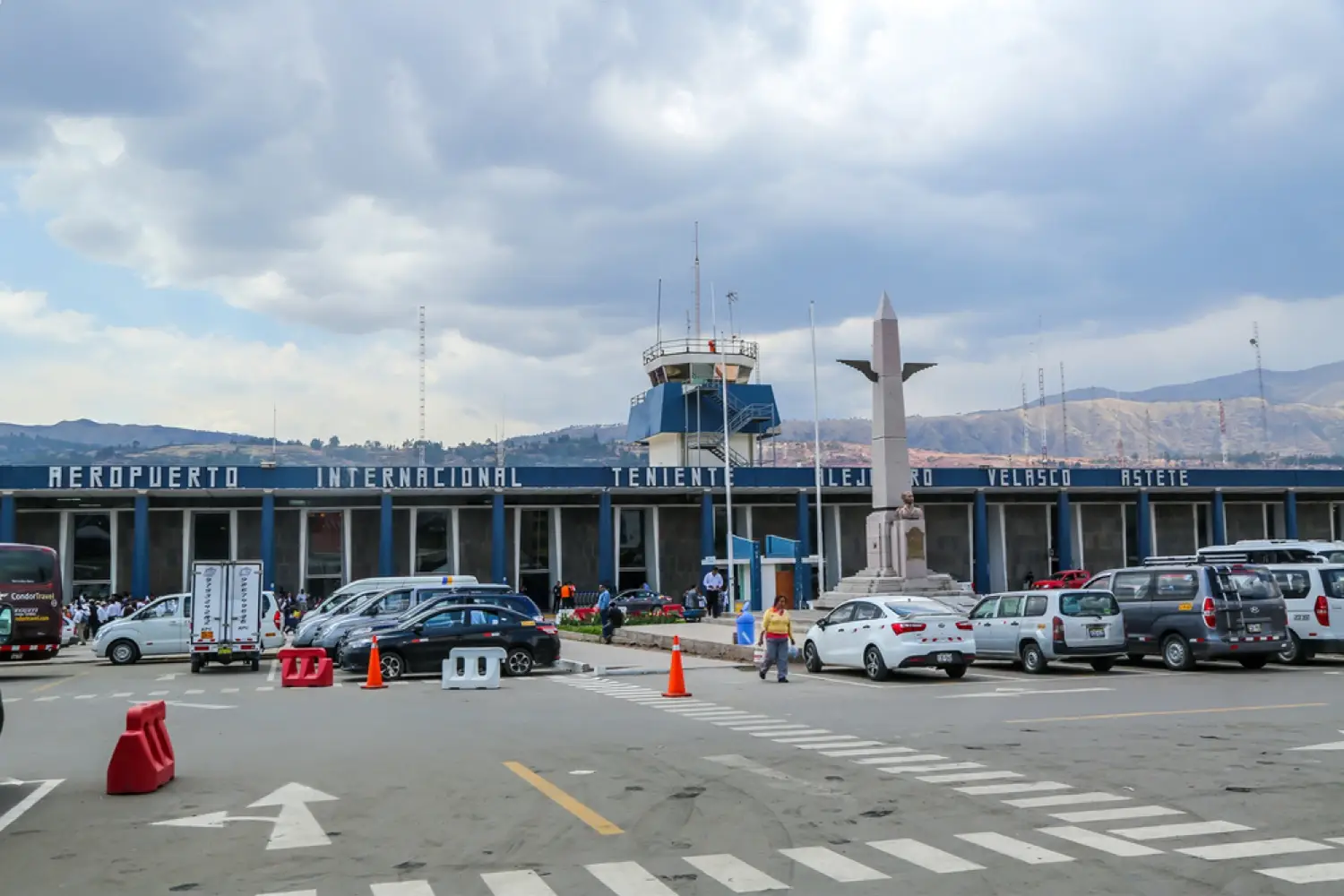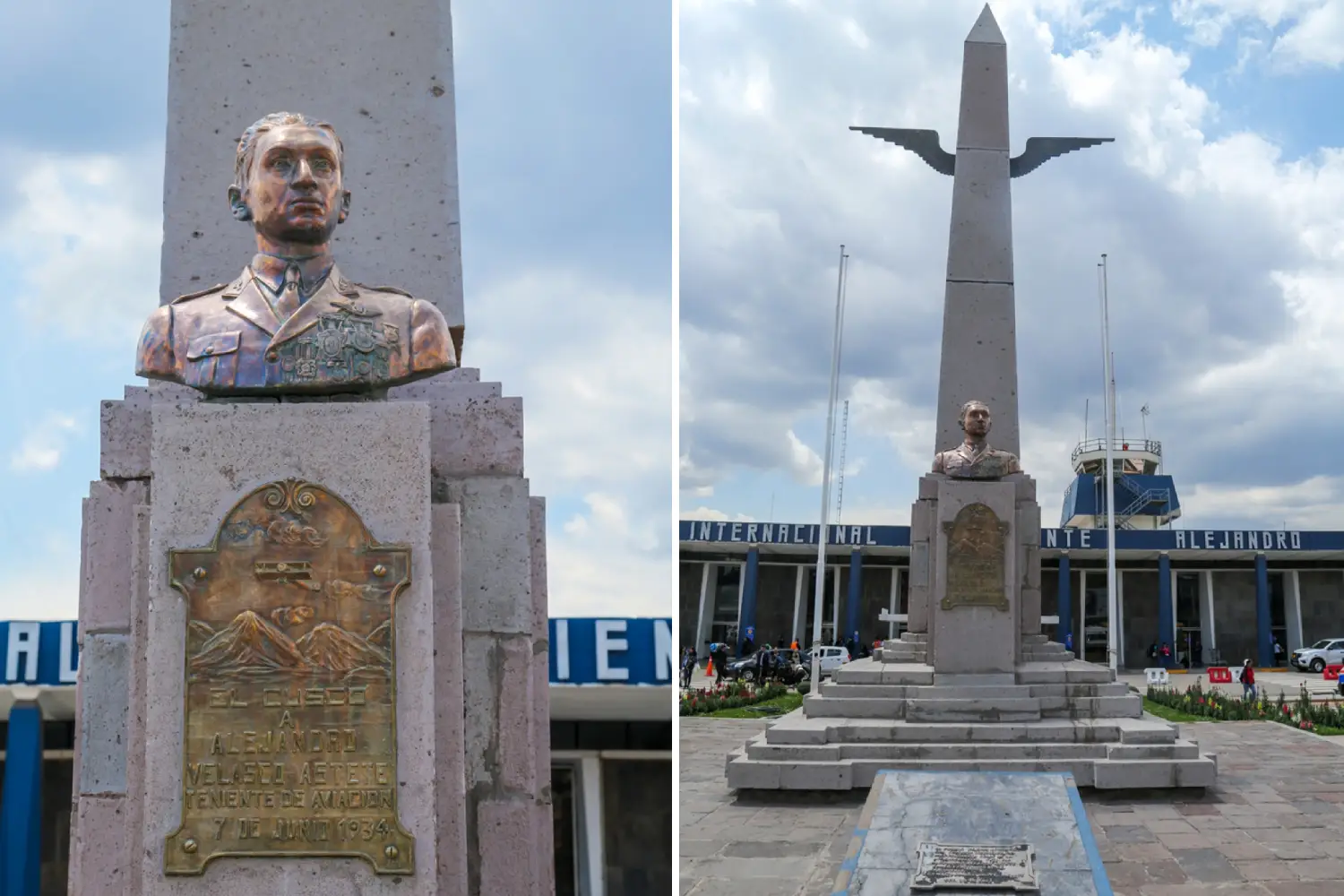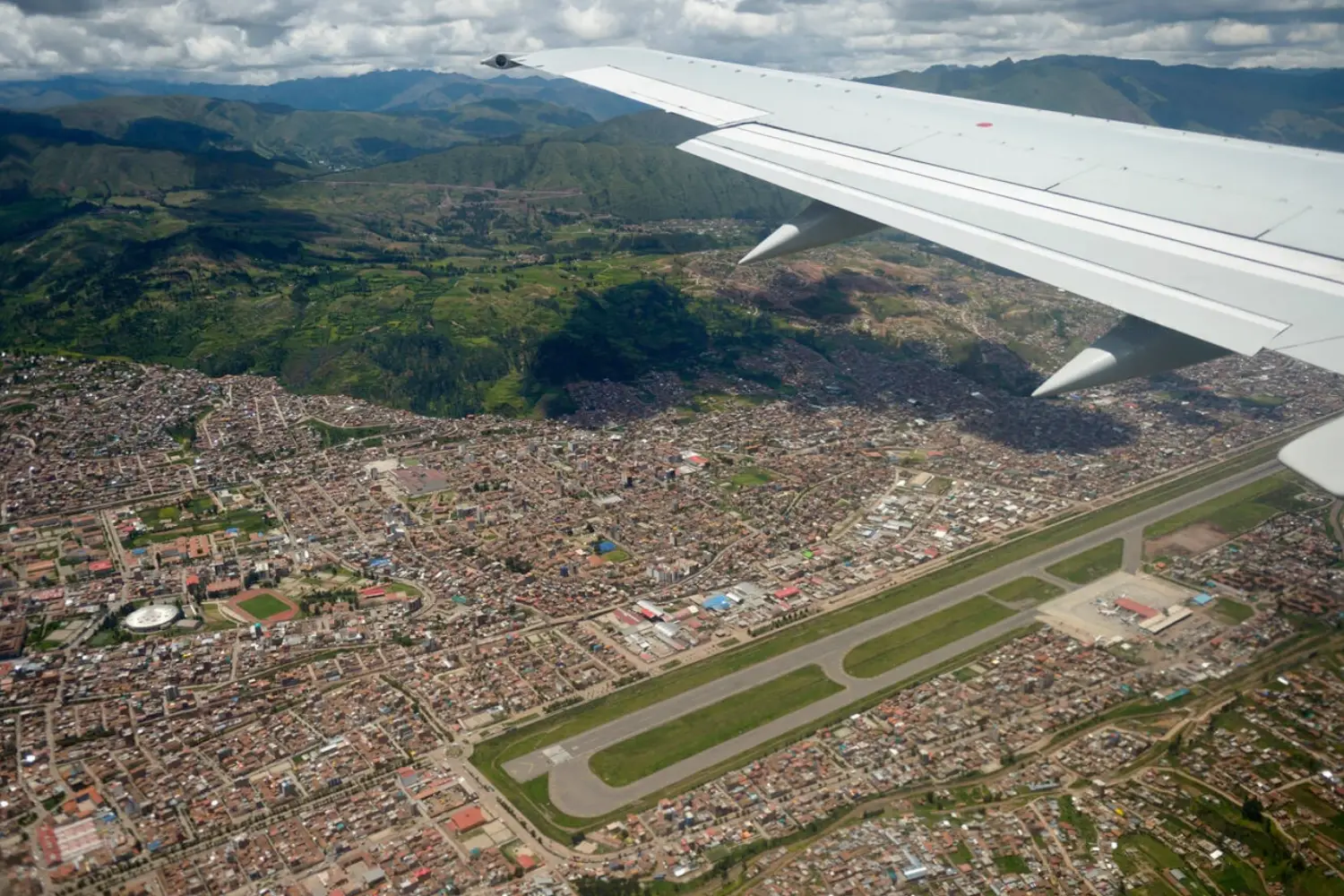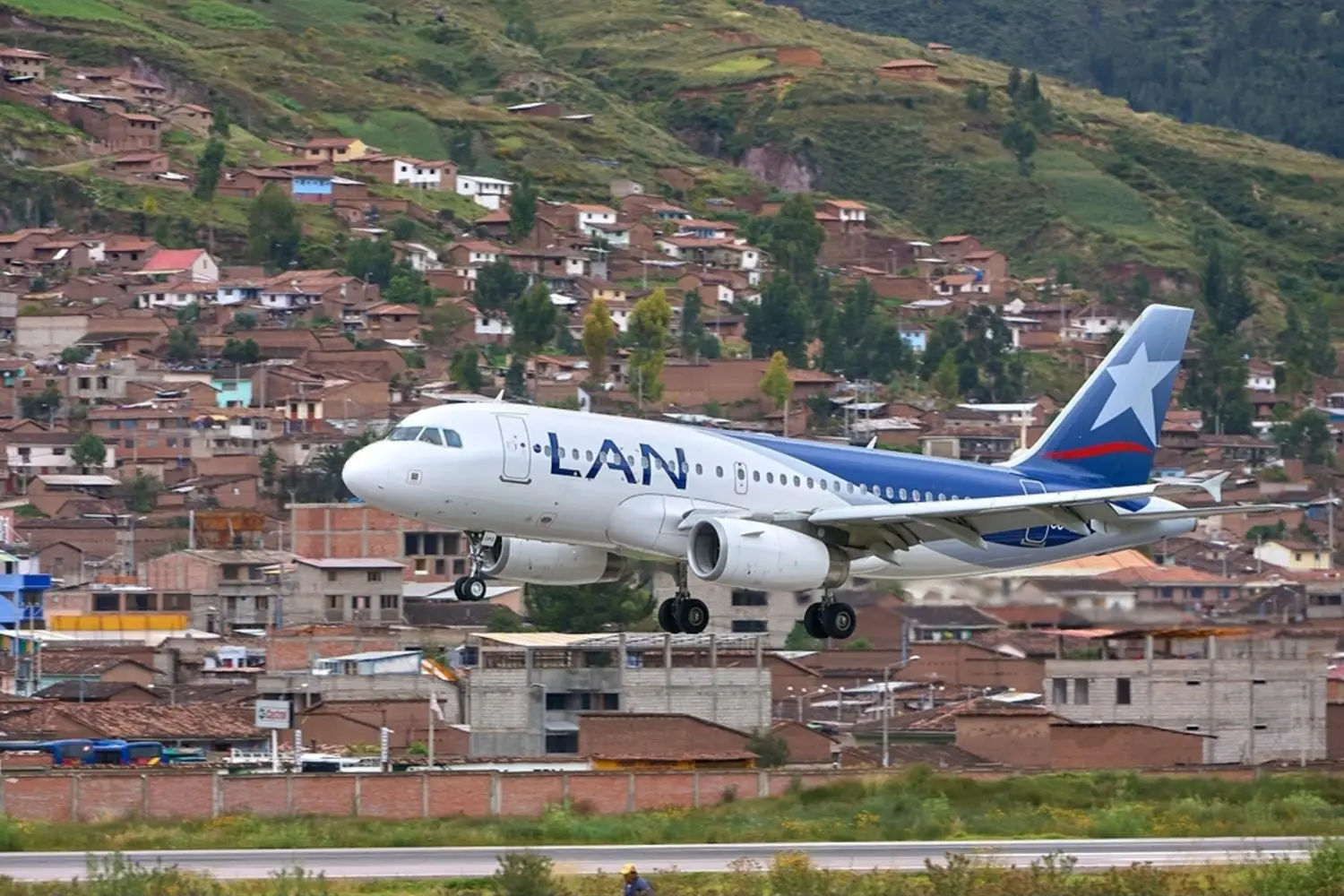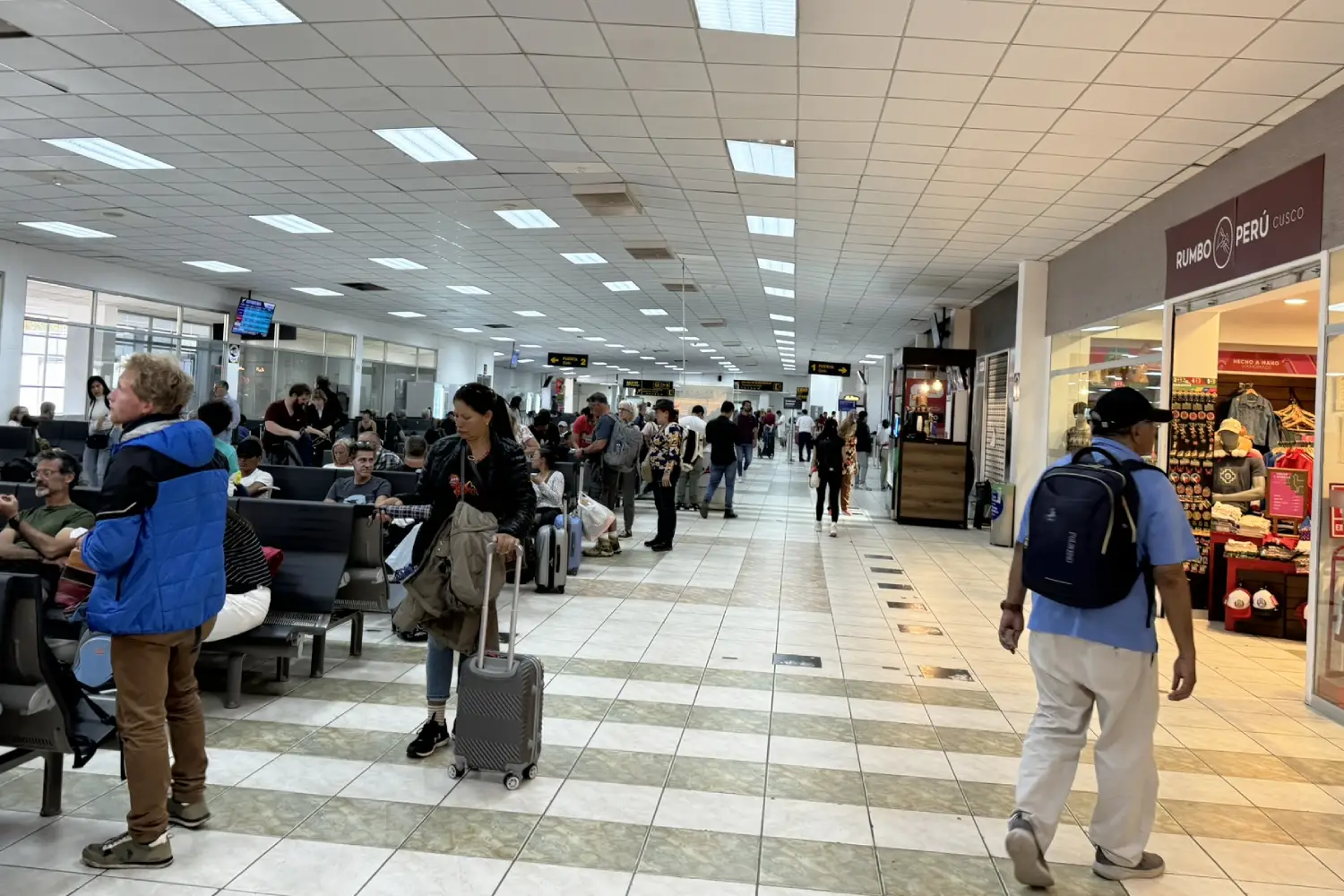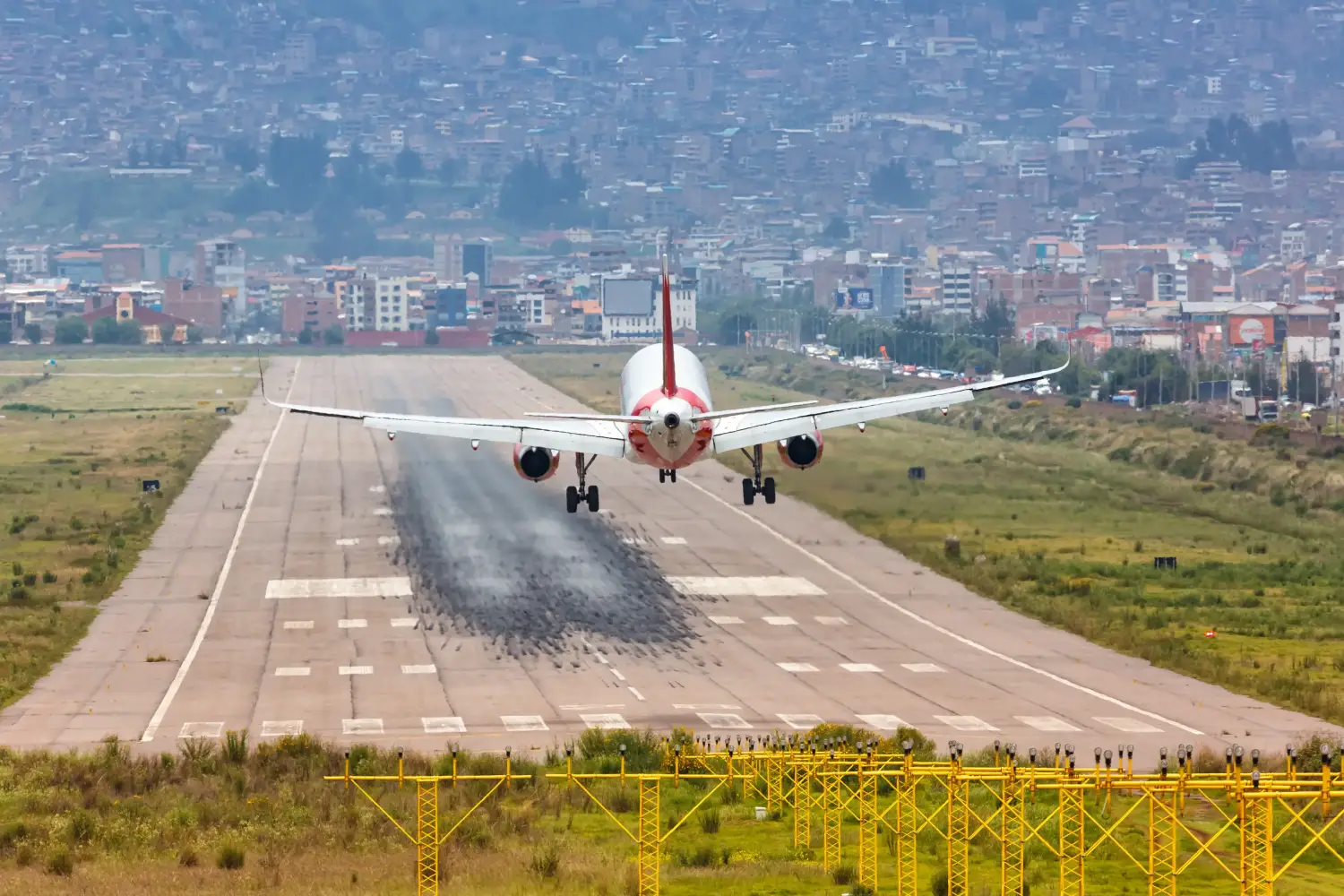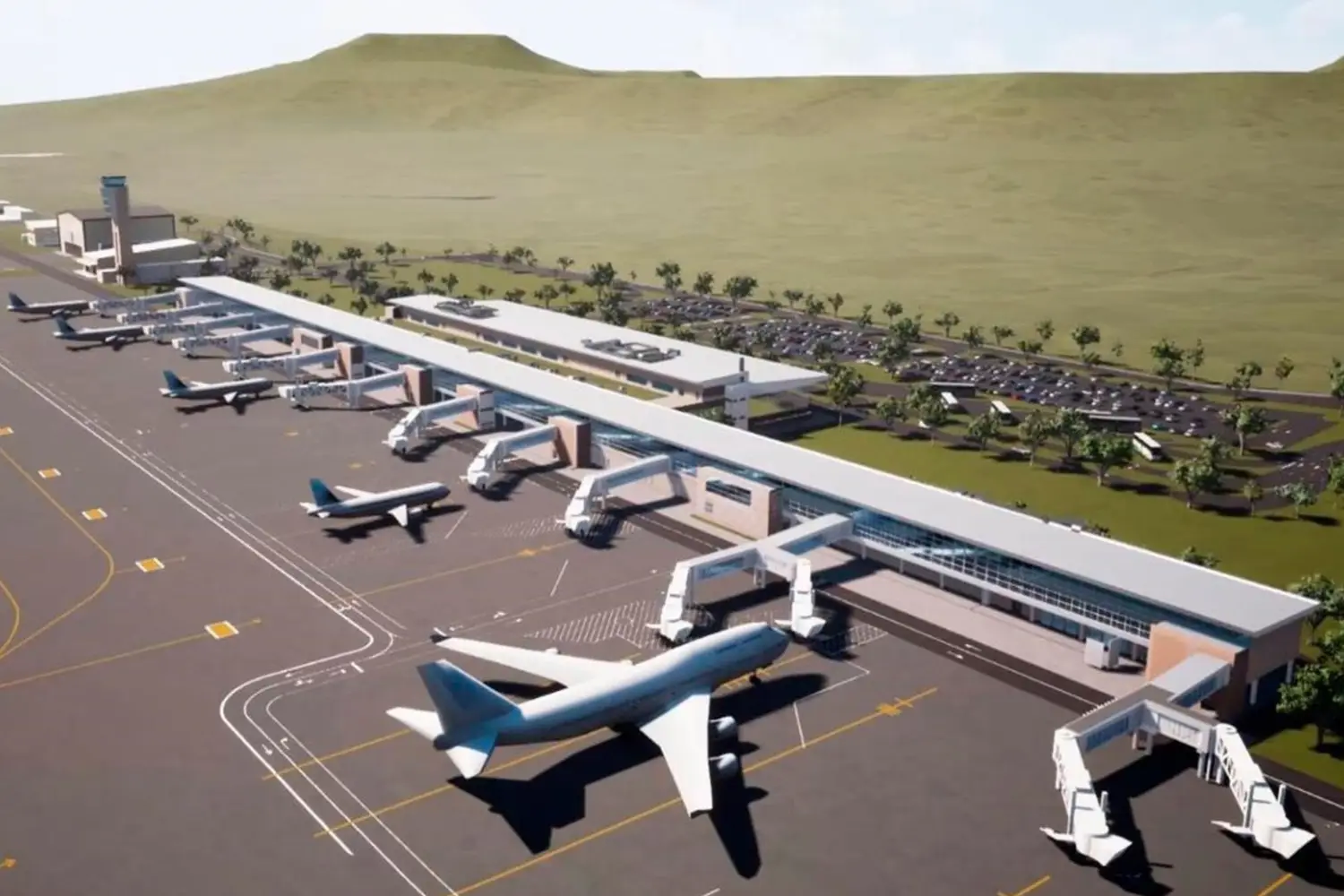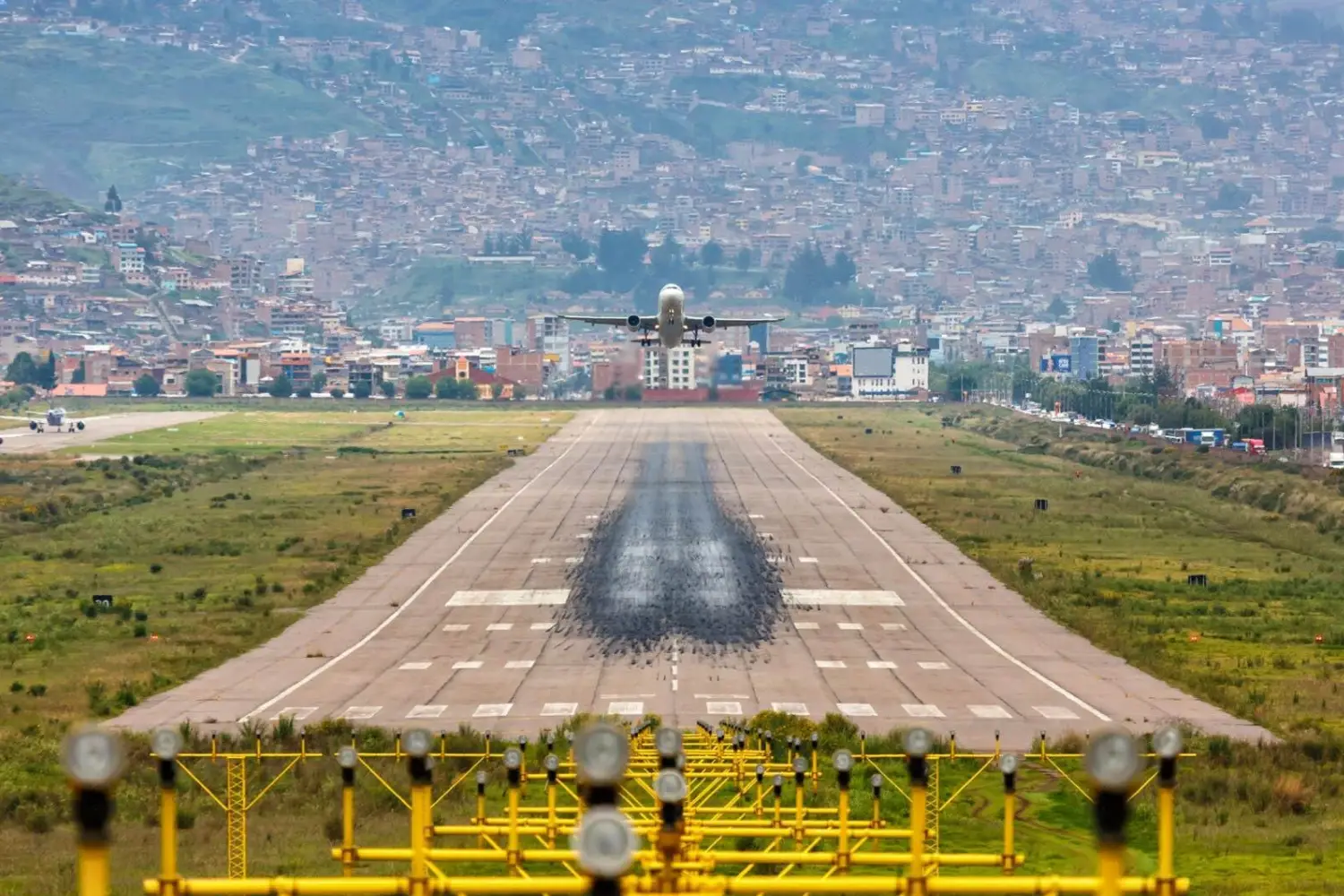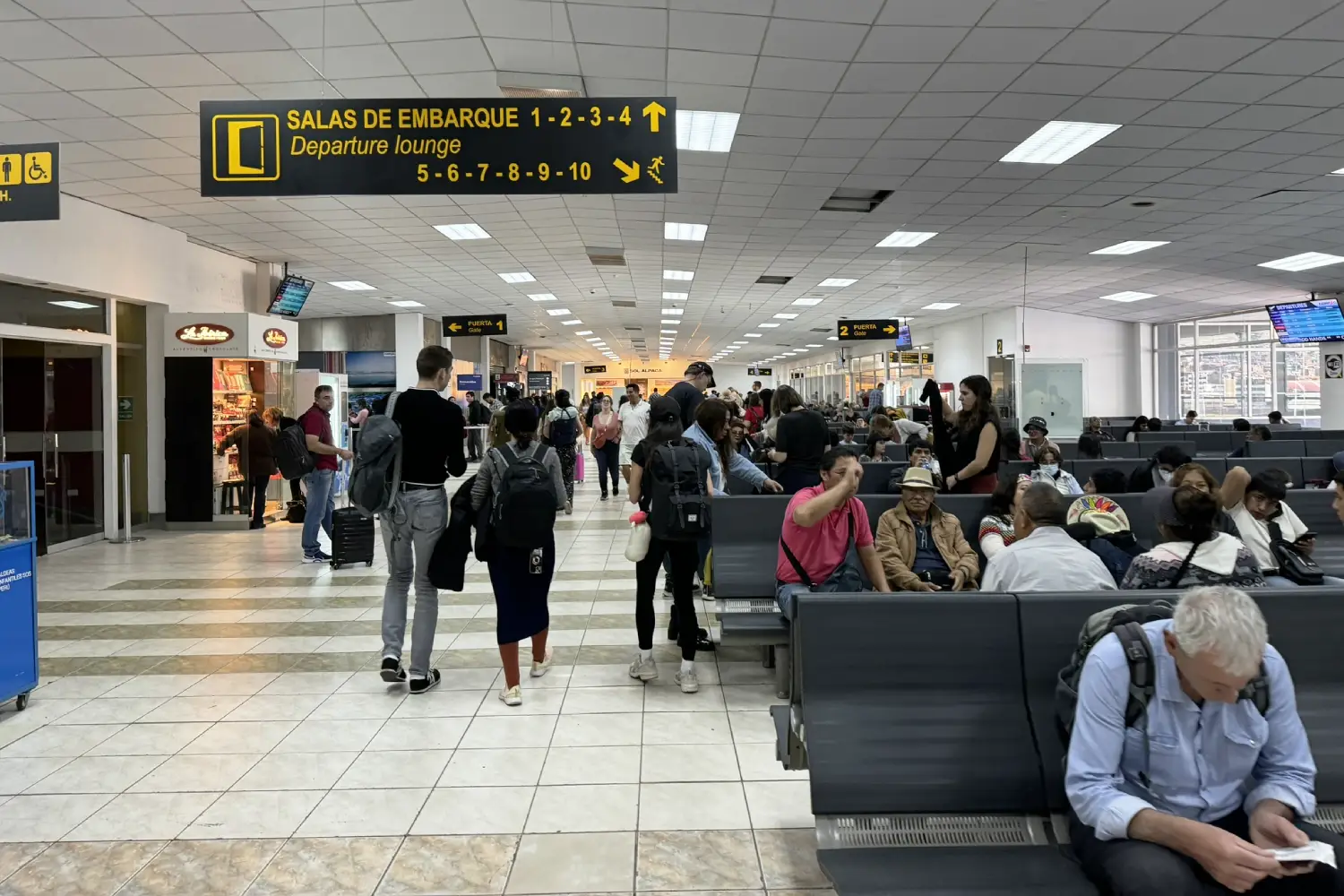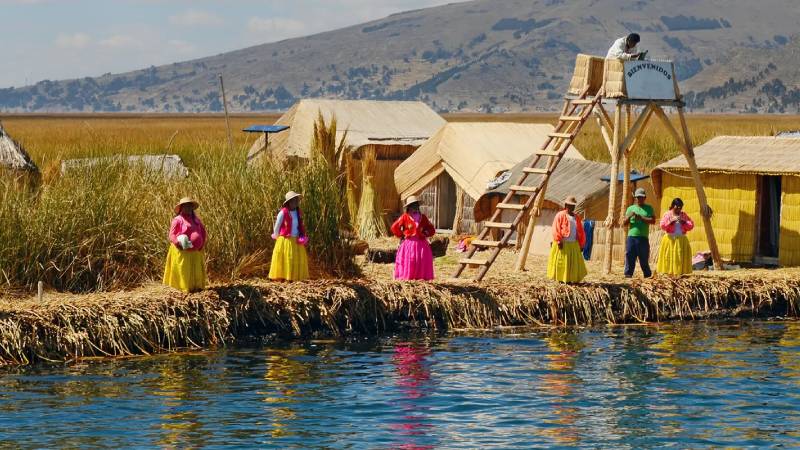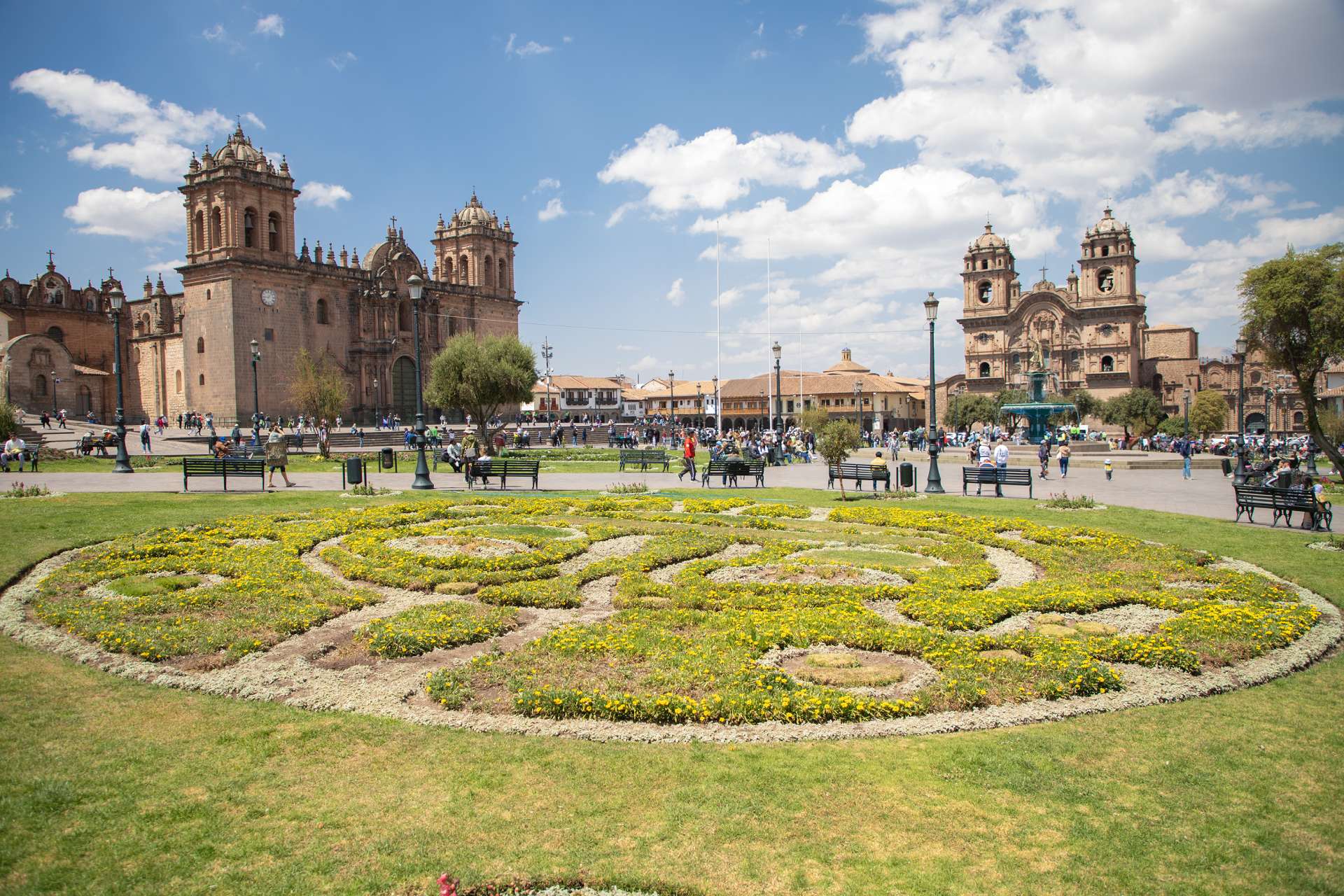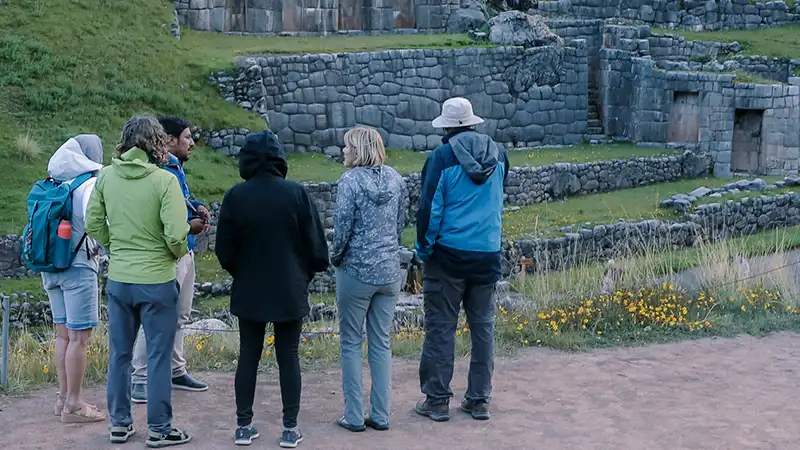An airport at 3,310 meters above sea level is no ordinary place. This isn't just a fun fact: it means that the moment you step into Cusco, you'll feel the majesty of the Andes in every breath. The Cusco Airport is not just a point of arrival: it's the direct gateway to the heart of the Inca Empire and to Machu Picchu. Millions of travelers pass through it every year, making it the second busiest airport in Peru.
But if you're flying to Cusco, you need more than just a ticket, you need a strategy. This complete guide will give you exactly that: the secrets, facts, and tips that will turn your arrival at the Cusco Airport into a much easier and safer experience.
Where is Cusco Airport and what is it called?
The Cusco Airport is officially named Teniente Alejandro Velasco Astete International Airport. It is located in the districts of Wanchaq and San Sebastián, about 15 minutes by car from the historic center of Cusco.
This makes it one of the most accessible airports in Peru. While in other cities it may take more than an hour to reach the terminal, in Cusco the ride is short and straightforward. At an altitude of 3,310 meters above sea level, it is also one of the highest airports in Peru.
History and significance of Cusco
Airport The Alejandro Velasco Astete International Airport was inaugurated in 1964 and was formerly called Quispiquilla Airport, located 5.5 km from Cusco’s center. It was named in honor of Peruvian pilot Alejandro Velasco Astete, who in 1925 made the first flight between Lima and Cusco, crossing the Andes, and who died that same year in a plane crash in Puno.
Since its opening, the Cusco Airport has established itself as the main gateway to Cusco and Machu Picchu. Today, it is the second most frequented airport in Peru, after Lima’s Jorge Chávez Airport. Its importance makes it a strategic point for tourism and connectivity in the Andes.
Important facts about Cusco Airport
- IATA Code: CUZ
- Type: Domestic and International
- Altitude: 3,310 meters (get ready for altitude sickness!)
- Annual capacity: Over 3.5 million passengers
- Airlines operating: LATAM, Sky Airline, JetSMART, Viva Air (until 2023), Avianca, among others.
- Main destinations: Lima, Arequipa, Puerto Maldonado, La Paz (Bolivia), Santiago de Chile, and Bogotá.
Flights and airlines at Cusco Airport
The Alejandro Velasco Astete International Airport is the main entry point to the imperial city and to Machu Picchu. This terminal receives daily domestic flights from Peru's main cities, as well as direct international connections from several South American destinations.
Main domestic routes to Cusco Airport
- Lima - Cusco: the most frequent route, with multiple daily departures. Approximate duration: 1h 15 min.
- Arequipa - Cusco: ideal for travelers in southern Peru.
- Puerto Maldonado - Cusco: great for connecting to the Amazon rainforest.
- Juliaca - Cusco: frequently used by those visiting Lake Titicaca.
- Trujillo - Cusco: direct connection from northern Peru to the heart of the Inca Empire.
- Iquitos - Cusco: available during high season, great for combining jungle and Andes.
Available direct international flights
- Santiago de Chile (SCL): operated by LATAM Airlines.
- Bogotá (BOG): operated by Avianca.
- La Paz (LPB): operated by Avianca.
Airlines operating at Cusco Airport
- LATAM Airlines: the airline with the highest frequency of domestic and international flights.
- Sky Airline: low-cost option with national and international routes.
- JetSMART Peru: affordable alternative with key routes in Peru.
- Viva Air: (seasonal operation) flights available during peak periods.
- Avianca: domestic flights (Lima, Arequipa) and international (Bogotá, La Paz).
- Amaszonas (Bolivia): direct flights from La Paz.
Useful tip: If traveling between June and September (high season in Cusco), we recommend booking tickets in advance, as tourist demand is high and flights often sell out or increase in price.
How to get from Cusco Airport? Transportation options and prices
The airport Cusco is located less than 6 km from Cusco’s historic center, and the ride usually takes between 15 and 20 minutes by car depending on traffic. Thanks to its proximity, there are multiple transportation options to reach your hotel quickly, safely, and according to your budget:
Official taxi (from the airport)
- Average price: between 20 and 40 soles (5 to 10 USD).
- Book directly at the arrivals area of the airport.
- They are safe, authorized, and easy to recognize by their uniform and official counter.
Useful tip: Do not accept services from individuals without uniforms or ID. Always choose official taxis or book in advance.
Private transport (by reservation)
- Ideal if you've already booked a tour, hotel, or are traveling with a lot of luggage.
- Some hotels offer free transfers if you book directly with them.
- Your driver usually waits with a sign in the arrivals area.
Ride-hailing apps (Uber, InDriver, Cabify)
- They work in Cusco, although they may not always be allowed inside the airport, so you might need to walk a few meters outside to meet your driver.
- Estimated price: between 15 and 30 soles, depending on demand.
Shared or tourist transport
- Some agencies and tours offer shared vans or minibuses.
- Estimated price: 10 to 15 soles per person.
- A good option to save money if you're not carrying much luggage.
Public transport (only recommended for experienced travelers):
- You can walk about 200 meters outside the airport to Velasco Astete Avenue, where you’ll find local buses.
- Price: around 1 sol.
- Not recommended for first-timers or if you're carrying large suitcases, as these are often full and not designed for tourists.
Services available at Cusco Airport
While the Cusco Airport is not very large, it offers essential services for travelers arriving or departing from the city. Here’s a summary of what you’ll find:
Restaurants, cafes, and drinks
- Cafés with Peruvian coffee, teas, and snacks.
- Fast food and local Peruvian dishes.
- Bakeries and stores with hot or cold beverages.
Tip: Buy water or snacks before entering the boarding area, where options are fewer and more expensive.
Shops and souvenirs
- Souvenir and local craft shops.
- Sales of clothes, Andean textiles, blankets, and traditional goods.
- Basic travel supplies.
ATMs, currency exchange, and SIM cards
- ATMs: BCP, Interbank, BBVA, GlobalNet.
- Currency exchange: available in public and departure areas. Rates may not be ideal but are useful for quick soles exchange.
- SIM cards: Claro and Movistar mobile lines are available for immediate data access.
Wi-Fi and connectivity
- Free Wi-Fi for a limited time.
- Note: the signal may be unstable during peak hours.
Other useful services
- Official tourist information points.
- Basic medical assistance in case of emergencies.
- Waiting rooms and seating areas.
- VIP lounge for added comfort.
- Police security in the arrivals zone.
Important: The airport currently does not offer official luggage storage. If needed, nearby hotels or travel agencies might help.
Operating hours, weather, and flight conditions
Cusco Airport operates daily from 5:00 a.m. to 10:30 p.m. Unlike other international airports, it does not have an Instrument Landing System (ILS), which means there are no night flights, and delays or cancellations may occur due to bad weather or fog.
Best time of day to fly
Since the airport is surrounded by mountains and has technical limitations in adverse conditions, mornings are generally the best time to fly. Between 5:30 a.m. and 11:00 a.m., flights tend to depart more punctually.
If you have an important international connection, it's advisable to choose morning flights, as delays are more common in the afternoon due to weather.
What happens during the rainy season?
During the rainy season (November to March), delays or cancellations are more frequent due to fog or poor weather, especially early in the morning.
Tip: If you're traveling during the rainy season, avoid booking the first flight of the day, as early morning conditions can be more variable.
The new International Airport of Chinchero
Currently, the Cusco Airport operates normally, but because of space limitations and increasing passenger numbers, the new Chinchero International Airport is under construction in the Sacred Valley, about 29 km from the city (around 50 minutes by car).
Why is the new airport being built?
The current airport, although close to Cusco's center, has space, schedule, and technology limitations. It cannot operate night flights nor expand due to surrounding urban areas. This has led to congestion, especially during high tourist seasons.
That's why the Chinchero International Airport is positioned as a modern and strategic solution to improve air connectivity in southern Peru.
What advantages will the new airport offer?
The new terminal will be larger, more modern, and equipped with advanced technology, which will allow:
- Direct international flights from North America, Europe, and South America.
- Greater capacity to receive domestic and international passengers.
- Night operations, thanks to a full instrument landing system (ILS).
- Decongestion of the current airport and a better traveler experience.
When will the Chinchero Airport open?
The estimated opening date is between 2027 and 2028, depending on construction progress. Once operational, the new airport will become the main gateway to Cusco and Machu Picchu for tourists from all over the world. Meanwhile, the current airport continues to function as the primary point of arrival.
Hotels near Cusco Airport
If your flight arrives late or departs early, staying near the airport can be convenient. Some options:
- San Agustín El Dorado (more central)
- Hotel Golden Inca
- Wayqey Hotel Cusco
- Airbnb-style accommodations in Wanchaq
Distances: between 5 and 15 minutes by taxi.
Practical tips for travelers at Cusco Airport
Traveling through Alejandro Velasco Astete International Airport can be smoother if you keep a few recommendations in mind. Here’s a guide with useful tips before, during, and after your airport experience:
Arrive early
- Domestic flights: arrive 2 hours in advance.
- International flights: arrive 3 hours early.
During high season (June to August) and peak hours, the airport gets more crowded, so allow for extra time.
Best time and season to fly
- The dry season (May to October) is the best time to fly, with fewer chances of weather-related delays.
- Avoid the rainy season (November to March) and early morning flights, as these are more likely to be delayed due to fog.
Transport and safety
- Book your transportation in advance, especially in high season.
- Use official airport taxis and avoid informal street options.
- Always have your ID or passport ready when entering the airport.
Money and shopping
- Carry some soles in cash, as ATMs may not always be available.
- Buy snacks or drinks before entering the boarding area, where options are more expensive and limited.
How to handle altitude sickness
Cusco Airport is over 3,300 meters above sea level, so altitude sickness (soroche) is common. To avoid discomfort:
- Rest upon arrival and take it easy.
- Drink plenty of water.
- Avoid alcohol and heavy meals on your first day.
- Drink coca tea or hot herbal infusions.
- If you have respiratory conditions, consult your doctor before traveling.
Useful apps and contacts
Download and keep these handy
- Google Maps: to navigate even offline.
- Taxi Seguro Cusco or InDriver: safer transport options.
- iPerú: official tourist assistance (there's a booth at the airport).
- WhatsApp: most taxi drivers and agencies use it.
In case of emergency
- Tourist Police: 105
- iPerú Cusco: (+51) 84 581 111
Other useful tips
- Stay hydrated and move slowly if it’s your first day in Cusco.
- Be patient: the airport tends to be crowded, especially in high season.
Frequently Asked Questions
- Can I take an international connecting flight directly from Cusco?
Not always. Although there are direct flights to Santiago de Chile, Bogotá, and La Paz, most international flights still require a stopover in Lima.
- Are there lockers or luggage storage at the airport?
No. Currently, Cusco Airport does not have official luggage storage services. Some nearby hotels or travel agencies may offer this service, but it’s best to arrange it in advance.
- Is the airport equipped for travelers with reduced mobility?
Yes, it has ramps, elevators, and accessible restrooms. However, being a relatively small airport, resources may be more limited compared to larger airports. It's recommended to request assistance when booking your flight.
- How much luggage can I bring?
It depends on the airline. Generally:
- 1 carry-on (8 to 10 kg)
- checked bag (15 to 23 kg)
Always check the details when purchasing your ticket.
- Can I get a taxi through apps like Uber or InDriver?
Yes, although they may not always be allowed to enter the airport. It's best to arrange pickup near the main exit.
- Can you sleep at the airport?
There are no designated rest areas. If you have a long layover, it’s better to book a nearby hotel.
- What should I do if my flight is delayed or canceled?
- Contact your airline at the airport counter.
- Check flight information screens regularly.
- Ask about no-fee rescheduling in case of weather issues.
- Is it easy to get to the city center from the airport?
Yes. The ride is short (under 6 km). You can go by:
- Private taxi: 15 minutes
- Shared taxi or app: 20–25 minutes
- Walking: not recommended due to altitude and traffic
- Is Cusco Airport safe?
Yes. It’s a safe airport with good signage. Still, like any tourist destination:
- Watch your belongings
- Avoid exchanging large amounts of cash in public
- Don’t accept help from strangers outside the terminal
- Is there a VIP lounge at Cusco Airport?
Yes, there is a VIP lounge with basic services like snacks, drinks, Wi-Fi, and rest areas. Perfect for travelers seeking more comfort while waiting.
Cusco awaits you with history, culture, and adventure. Knowing how Cusco Airport works will save you time and help you enjoy your journey from the very first minute.
Do you have more questions about your arrival in Cusco? Leave them in the comments!

